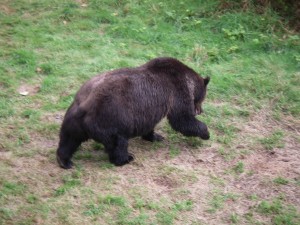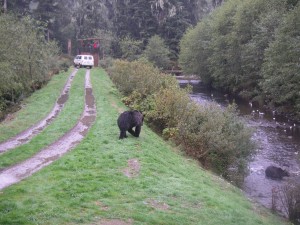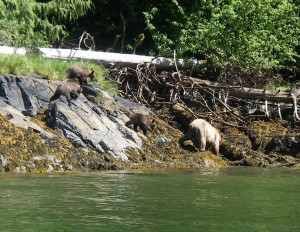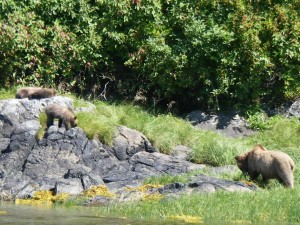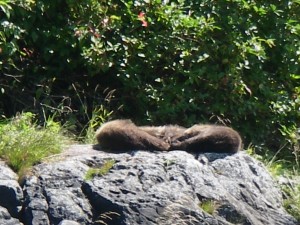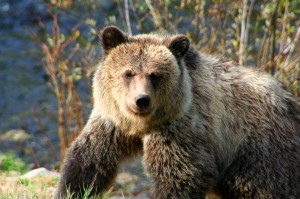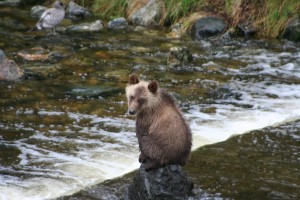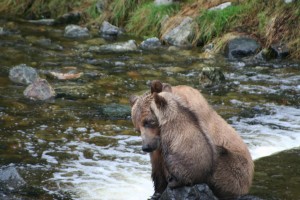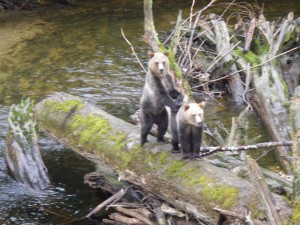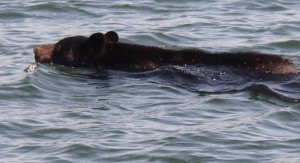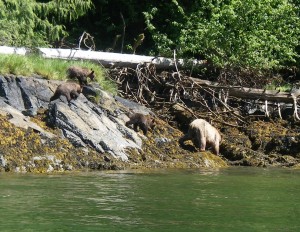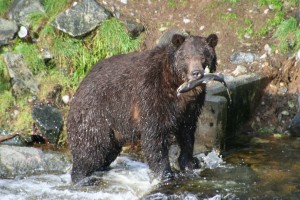Late September on a grizzly bear tour from the lodge and we are in the first viewing platform overlooking the entrance to the spawning channel. A grizzly bear has just passed beneath the stand and is walking down the road toward the second or finger stand. We normally use the finger stand as it offers views of the natural river as well as the spawning channel entrance. Grizzlies frequently walk along the road when there are bears fishing in the channel entrance.
